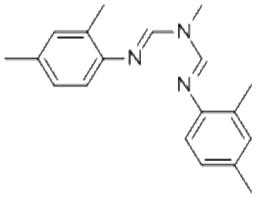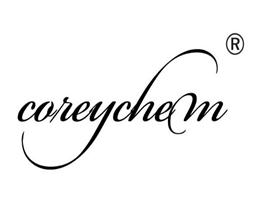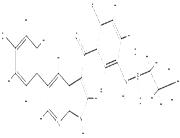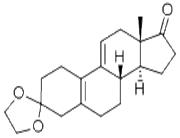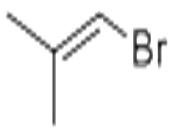1/2
Amitraz
$ 1.00
/1KG
- Min. Order1G
- Purity98%
- Cas No33089-61-1
- Supply Ability100KG
- Update time2019-07-06

career henan chemical co
VIP8Y
 China
China
Since:2014-12-17
Address:Zhengzhou High tech Zone, Henan Province, China
Enterprise Verified
Business Bank account
Basic Contact Infomation
Business Address
Trade Company



Chemical Properties
| Product Name | Amitraz |
| CAS No | 33089-61-1 |
| EC-No | 251-375-4 |
| Min. Order | 1G |
| Purity | 98% |
| Supply Ability | 100KG |
| Release date | 2019/07/06 |
AD68
| Amitraz Basic information |
| Broad spectrum acaricide Monocarboxamidine Control object Instructions Precautions Toxicity Chemical Properties Uses Production method |
| Product Name: | Amitraz |
| Synonyms: | 2-methyl-1,3-di(2,4-xylylimino)-2-azapropane;acarac;amitraze;amitrazestrella;azadieno;azaform;baam;bipin |
| CAS: | 33089-61-1 |
| MF: | C19H23N3 |
| MW: | 293.41 |
| EINECS: | 251-375-4 |
| Product Categories: | FUNGICIDE;AM to AQPesticides;A;A-BPesticides&Metabolites;AcaricidesAlphabetic;Alpha sort;Formamides;Insecticides;Pesticides;Pesticides&Metabolites;Agro-Products;Aromatics;Halogenated Heterocycles ,Thiophenes |
| Mol File: | 33089-61-1.mol |
 |
|
| Amitraz Chemical Properties |
| Melting point | 86-87°C |
| storage temp. | 0-6°C |
| form | Powder/Solid |
| color | White |
| λmax | 247nm(lit.) |
| Merck | 14,486 |
| CAS DataBase Reference | 33089-61-1(CAS DataBase Reference) |
| NIST Chemistry Reference | Amitraz(33089-61-1) |
| EPA Substance Registry System | Methanimidamide, N'-(2,4-dimethylphenyl)- N-[[(2,4-dimethylphenyl)imino] methyl]-N-methyl-(33089-61-1) |
| Safety Information |
| Hazard Codes | Xn;N,N,Xn |
| Risk Statements | 22-43-48/22-50/53 |
| Safety Statements | 22-24-36/37-60-61 |
| RIDADR | UN 3077 |
| RTECS | ZF0480000 |
| HazardClass | 9 |
| PackingGroup | III |
| Hazardous Substances Data | 33089-61-1(Hazardous Substances Data) |
| Toxicity | LD50 in male rats, female mice, rabbits, guinea pigs, bobwhite quail (mg/kg): 800, >1600, >100, >400, 788 orally; LD50 in rabbits, male rats (mg/kg): >200, >1600 dermally; LC50 (48 hr) in rainbow trout, Japanese carp: 3.3, 1.2 ppm (Labonne) |
| MSDS Information |
| Amitraz Usage And Synthesis |
| Broad spectrum acaricide | Amitraz is a broad spectrum formamidine class acaricidal pesticide. In 1971, its acaricidal activity was reported by Palmer (B.H.Palmer) et al. In 1973, Boots (Boots Co.Ltd.) recommended it as an acaricide. Chemical name: 1,5-bis-(2,4-dimethyl-phenyl)-3-methyl-1,3,5-triazole-1,4-pentadiene, the original drug is white or yellow needles-like crystal with some flavor of carbon amine. Density: 0.3, a melting point of 86~87°C, vapor pressure in 20°C of 506.6 × 10-7 Pa, slightly soluble in water, soluble in organic solvents such as xylene, acetone and methanol. It is stable to temperature and light under anhydrous condition; however, it is unstable under acidic condition. It is non-flammable, non-explosive, and easily to get decomposed and corrupted upon long-term storage in damp places. It has effects of contact-killing, apastia, repellent. Moreover, it has certain effects such as stomach poisoning, fumigation and the suction effect. It is effective against various instars of tetranychidae, but less effective against overwintering eggs. It has a variety of toxicity mechanisms with the main effect of inhibition of monoamine oxidase activity. It can stimulate non-cholinergic synapses of the central nervous system of pest mites. It can also effectively fight against pest mites which is resistant to other kinds of acaricide. Its efficacy can last for 40 to 50 days. It is mainly used for prevention and treatment of many kinds of pest mites among a variety of crops such as fruit, vegetables, tea, cotton, soybeans, and sugar beets. It also has good control effect against psyllid class and some kinds of lepidopteran pest’s egg. It also has partial control effects on scales, aphids and cotton bollworm, red bollworm, etc. It can be further used for controlling cattle mites, sheep mites and bee mites. Mixing amitraz with organophosphate and pyrethroid, avermectin can enhance the effect and expand insecticidal spectrum. Pesticide ready-mixture also contain 10.8% Avi ? A double cream. The product is of moderate toxicity to human, animal. Acute oral administration for rate: LD50 is 500~600 mg/kg; acute percutaneous administration of rabbit: LD50> 200 mg/kg; acute inhalation for rat: LC50 of 65mg/L. It has low toxicity to bees, birds and other predators. It has irritant effects on human skin and mucous membrane and has inhibitory effect on the central nervous systems of human. No known specific antidote is available for treating poisoning. Toxicity to natural enemies: LC50 (mg/kg): Mallard 7000, Japanese quail 1800, the North American quail 788; LC50 (14 days) earthworm> 1000mg/kg; low toxicity to bees and predatory insects, LC50 (contacts)> 50μg/bee. Toxic to fish; The LC50 of 48 hours exposure to carp is 1.17 mg/liter. No accumulation in vivo toxicity. The above information is edited by the Chemicalbook of Dai Xiongfeng. |
| Monocarboxamidine | Monocarboxamidine amidine is a broad-spectrum organic nitrogen formamidine acaricide, which is the homologue of double formamidine. Chemical name: N-(2, 4-dimethylphenyl)-N'-methyl formamidine. Market sales of goods mostly single formamidine hydrochloride, the appearance of yellow or brown liquid, a density of 1.090~1.105, pH value is less than 1, not combustible, corrosive to metal. Pure products are white needle crystals, mp 163~165 °C, soluble in water with acidic aqueous solution, slightly soluble low molecular weight alcohol, insoluble in petroleum ether, benzene and other organic solvents. It is of high optical, thermal stability. It has contact-killing and fumigation effect on pest mites. It is effective against various instars of tetranychidae, high temperature yields (22 °C above) better efficacy. But it is less effective against overwintering eggs. Its main effect is the inhibition of monoamine oxidase activity. It can stimulate non-cholinergic synapses of the central nervous system of pest mites. It can also effectively fight against pest mites which is resistant to other kinds of acaricide. Mixing amitraz with organophosphate and pyrethroid, avermectin can enhance the effect and expand insecticidal spectrum. It is mainly used for prevention and treatment of many kinds of pest mites, cotton aphids among a variety of crops such as fruit, vegetables, tea, cotton, soybeans, and sugar beets. It can also be used to control livestock body lice and bee mites. It can cause poisoning to human and animal, and is also toxic to fish. |
| Control object | Mainly used for control of a variety of harmful mites among many crops such as fruit trees, vegetables, tea, cotton, soybeans, sugar beets. It also has good efficacy on homoptera pests such as pear psylla, whitefly. In addition, it can take effect on pear fruit borer and many kinds of Noctuidae pests’ eggs. It also has certain effects on controlling pests such as aphids, cotton bollworm, and pink bollworm. It is effective in treating nymphs, adult mites, and summer eggs, however, not useful in treating winter eggs. |
| Instructions | 1. Treat fruit, tea pest mites, and pests. Pests: apple spider mites, aphids and apple, citrus red mite, citrus rust mites, fleas, tea half tarsal line mites. Apply 1000~1500 times diluted diluted 20% amitraz EC for spray (100~200mg/kg). The lasting period is 1-2 months. At 5 days after the first round treatment of tea half tarsal line mites, perform another round to kill early hatched larva. 2. Vegetable mite control. For red spider of eggplant, beans, during the spread of nymph, Apply 1000-2000 times diluted 20% EC (the effective concentration of 100~200mg/kg) for spray. At the spread of nymph of watermelon and white gourd red spider mites, Apply 2000-3000 times diluted 20% EC (the effective concentration of 67~100mg/kg) for spray. 3. Cotton mite control. Apply 1000-2000 times diluted 20% EC (the effective concentration of 100~200mg/kg) for spray during the egg and spread of nymph of Cotton spider mite. Use 0.1~0.2mg/kg (equivalent to 1000~2000 times diluted 20% of the EC). This can also control the spread of the cotton bollworm, pink bollworm if used in the late stage of cotton growth. 4. Control of livestock body mites, ticks and other pests. Apply 2000~4000 times diluted 20% ??amitraz E for spraying and immersing of the livestock. For Cattle scabies (except horses), we can use 400 to 1000 times diluted 20% amitraz EC for rub and rinse. Every round contains two times of medicated bath with an interval of seven days, which will give a good effect. For treating varroa, use 4000~5000 times diluted 20% EC for spray. For mites that harmful to the environment, use 1000 times diluted 20% EC for spray. |
| Precautions | 1. Amitraz should be used in hot sunny weather. The efficacy is low when the temperature is below 25 °C. 2. Not suitable for mix in combination with alkaline pesticides (such as Bordeaux mixture, lime sulfur, etc.). Don’t apply for over 2 times for quarterly crops. Do not mix with parathion for apple or pear treatment in order to avoid injury. 3. Stop using 21 days before citrus harvest. The maximum amount is 1000 times. Stop using 7 days before the cotton harvest, the maximum amount is 3L/hm2 (20% amitraz EC). 4. Wash the skin with soap and water if the skins get touched. 5. Have leaf-burning effect on Spur Golden Delicious apple. It is safe to natural enemies of pests and bees. |
| Toxicity | For the original drug: acute oral administration for rat: LD50 of 600mg/kg (800mg/kg), mice 1600mg/kg; Acute percutaneous administration for rat: LD50> 1600mg/kg (female> 4640mg/ kg), rabbit> 200mg/kg; acute inhalation for rat: LD50> is 65mg/L. No stimulation to animal skin, eyes without stimulation. Sub-acute orally no-effect doses for rat per day: 3~12mg/kg. Chronic orally no-effect dose: 2.5~10mg/kg. Animal tests found no carcinogenic, teratogenic, mutagenic effect. Toxic to fish, LC50 of carp is 1.17mg/L (48h), for rainbow trout: 2.7~4mg/L (48h). It is of low toxicity to Bees, birds and other predators. |
| Chemical Properties | Pure product is white needle-like crystal. m.p.88~89 °C (86~87 °C), the vapor pressure: 5× 10-5Pa (20 °C); the relative density: 0.3; the saturated vapor concentration of 60μg/m3 (20 °C). Soluble in acetone, xylene, methanol and other organic solvents such as acetone 500g/L, toluene 300g/L; the water solubility of 1mg/L. Non-flammable, non-explosive, more stable in a neutral or alkaline, The half-life is 6 h in 20 °C, pH 7.0. Unstable in acidic medium,. Long-term storage in a humid environment will cause decomposition and corruption. |
| Uses | A broad spectrum acaricide; It mainly takes effect through contact action. It also has effects such as stomach poisoning, fumigation, feeding, and repellent. Plants have a certain degree of penetration absorption to it. It is effective in treating immature nymphs, adult mites and mite eggs, and also effective to control mites which are resistant to other acaricide. It has a rapid efficacy and a long duration. It is used mainly control of spider mite and cotton bollworm, pink bollworm, an apple and quince spider mite, citrus spider mites, fleas, ticks rust, body lice of cattle, sheep, pigs, ticks, mange and mite, tea tarsal line mites, and beans & eggplant red spider. For the control of cotton spider mite, at the peak of egg hatch to the spread of immature nymph, use 1000~2000 times diluted 20% EC for uniform spray. At the time when starscream, bollworm and pink bollworm spread concurrently, using it can treat bug and mites together to some extent. It is safe to cotton ladybugs, lacewings and other natural enemy. For the control of citrus red mite and apple mite, use 1000 to 2000 times diluted water-diluted 20% EC to spray. For the control of citrus rust mite, use 1000 to 1200 times water diluted 20% EC on water for spray. Use 1500 times diluted version for spray for prevention of fleas. Use concentration of 50~100mg/L for spray or immersion in prevention and treatment of acari of cattle, sheep and other livestock animals. This product is a broad spectrum miticide. Mainly used for fruit trees, flowers, strawberries and other agricultural and horticultural crops. It has good efficacy in control of mites, especially for citrus mites. It can also be used to control cotton bollworm, pink bollworm; prevention and treatment of livestock parasites ticks, mites, scabies mites and the like. Amitraz is a good kind of acaricide. |
| Production method | It comes from the reaction of 2,4-dimethyl aniline, triethyl orthoformate and methylamine. The consumption amount of raw materials is that: 2,4-dimethyl aniline (off 100%): 350kg/t, triethylorthoformate (off 100%): 500kg/t, monomethylamine 70kg/t, xylene 750kg/t. Method one: Preparing of N-2,4-dimethylphenyl-N'--methyl-formamidine. Xylene is nitrated, reduced and separated to obtained 2,4-dimethyl aniline. Then acidify with hydrochloric acid to yield the corresponding salts. Protocol: The mixture of 55.1g (0.35mol) 2,4-dimethylaniline hydrochloride, 83.7g (0.4mol) of p-toluenesulfonyl chloride and 150mL N-dimethylformamide was cooled and stirred. After the end of the exothermic reaction, stir the mixture at room temperature for 4h, add then pour them all into cold water for adjustment into basicity with 10mol/L sodium hydroxide solution. During this time, the temperature was kept below 10 °C. Filter, wash with water, dry, and re-crystal using cyclohexane to obtain N-2,4-dimethylphenyl-N'-methyl formamidine, m.p. 75~76 °C, yield 85%. The Synthesis of amitraz: The mixture of 19.4g (0.12mol) N-2,4-dimethylphenyl-N'-methyl formamidine, 0.3 g of p-toluenesulfonic acid, and 195mL of xylene is heated and refluxed for 48 h. dried was heated at reflux for 48h to release trimethylamine . After the completion of the reaction, distill out the xylene and solidify the residue under reduced pressure. Re-crystal twice using isopropanol to obtain amitraz, melting point 88~89 ℃, yield 90%. Or perform reaction in the presence of cyanophenyl with Cu2O as catalyst. Preparation Method Two Triethylorthoformate was reacted with 2,4-dimethyl aniline to get N-(2,4-xylene imino) ethyl (referred imidate). Then pass the dry methylamine gas into the imino ether, yielding Monocarboxamidine (N-2,4-xylyl-N'-methyl formamidine). Monocarboxamidine and imino ether is condensed into amitraz. Preparation Method Three 2,4-dimethylaniline is reacted with formic acid to obtain N-2,4-xylene, dimethylformamide. Then interact with phosgene with triethylamine as acid binding agent to get 2,4-dimethylphenyl isocyanide. Then push dry methylamine gas into the mixture of dimethylphenyl isocyanide and cuprous oxide, reaction. Add cyclohexane (when the reaction mixture is still hot) after the completion of reaction, cool and filter out the Monocarboxamidine. Then react it with dimethylphenyl isocyanide in the presence of benzene to obtain amitraz. |
| Chemical Properties | Beige to Pale Yellow Solid |
| Uses | coccidiostat, antiplatelet |
| Uses | Amitraz is an antiparasitic used to control red spider mites, leaf miners and scale insects. This compound is active by inhibiting the targets monoaminooxidase enzyme. |
| Definition | ChEBI: A tertiary amino compound that is 1,3,5-triazapenta-1,4-diene substituted by a methyl group at position 3 and 2,4-dimethylphenyl groups at positions 1 and 5. |
| Uses | Acaricide; insecticide. |
| General Description | White monoclinic crystals. Melting point 187-189°F (86-87°C). Insoluble in water. Used as an acaricide, insecticide and treatment of demodectic mange in dogs. |
| Air & Water Reactions | Insoluble in water. |
| Reactivity Profile | Unstable in acid. |
| Agricultural Uses | Insecticde, Acaricide, Veterinary medicine: Registered for control of pear psylla on pears, whitefly and mites on pears and cotton; cattle, dogs, sheep, and hog dip to control ticks, mange mites, lice and other pests. Not permitted on apples. Used to control red spider mites, leaf miners, scale insects, and aphids. Also used on cotton to control bollworms, white fly, leaf worms, and tobacco budworms. Not registered for use in EU countries |
Company Profile Introduction
Established in 2014,Career Henan Chemical Co. is a manufacturerspecializing in the sale of fine chemicals. Mainly deals in the sales of: Pharmaceutical intermediates OLED intermediates: Pharmaceutical intermediates; OLED intermediates;
